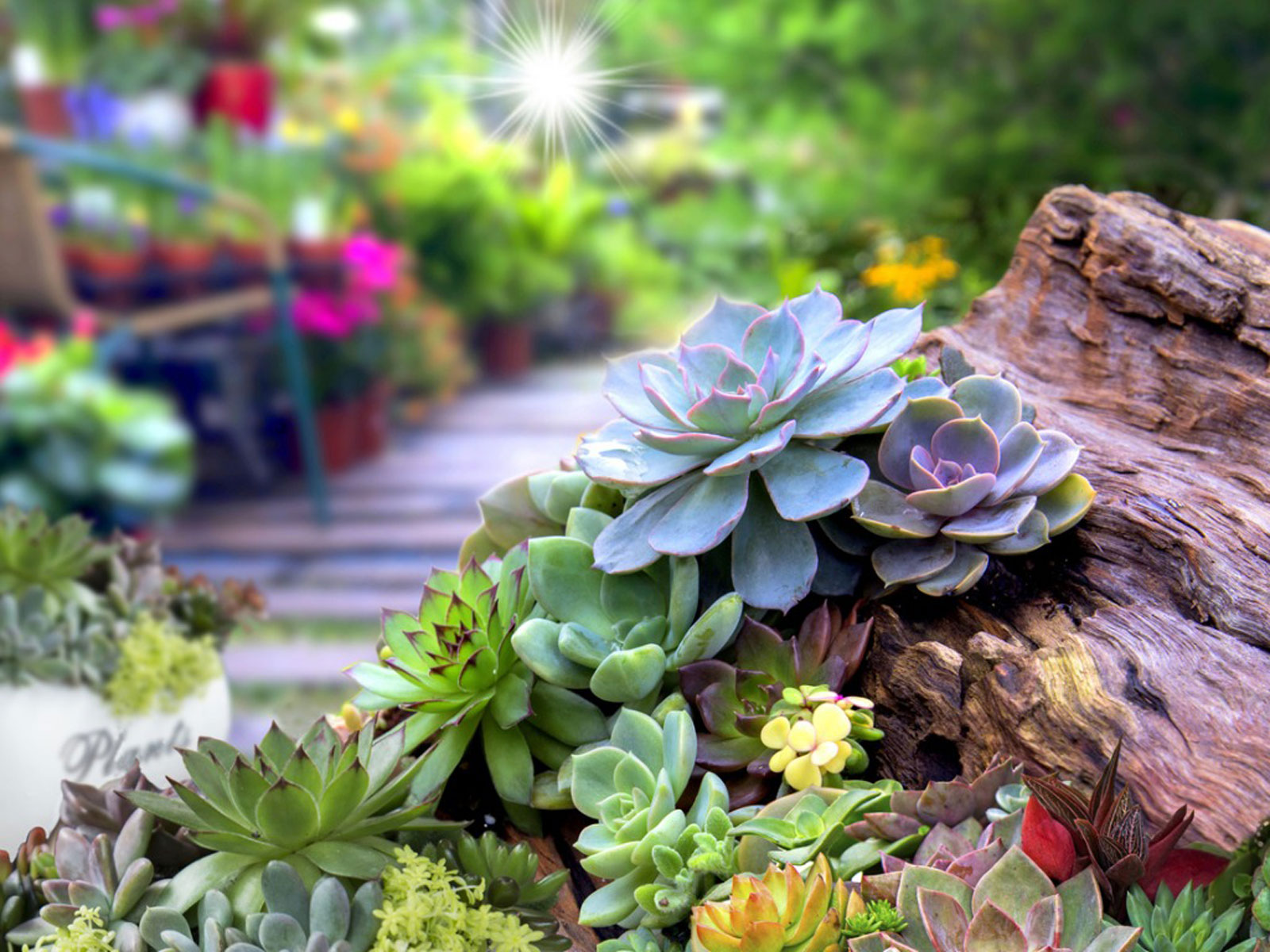
Whether you are aware of it or not, the chances that you have come across a succulent plant are high, since many specimens are beautifying numerous gardens all across the world. The real value of succulent plants lies in the vast prevalence and the variety of this most unusual plant species. You might keep it both in your garden with other plants of your choice, or you might decide to isolate your special succulent and take care of it while keeping it in a flowerpot, so it can keep you company whether you intend on preserving it in your office or your living room.
The energy a plant can generate is not to be neglected, especially because plants are not selfish living creatures and they enjoy sharing that energy with others. Therefore, if you take care of a specific plant, do remember that the concern is on both sides, since your plant friend gives positive vibrations back, whether you are aware of it or not. Not only does it share the positive vibe with you, but your plant also enriches your space with oxygen and collects negative agents from the air surrounding you such as radioactivity and other unfavorable factors invisible to the eye.
The interest in Succulents has skyrocketed in recent years because these wonderful plants are easy to maintain and give more in return than they actually ask and need. They enjoy the sun and come in many diverse shapes and sizes that certain specimens look as if they were out of this world. Since there are so many different variations of Succulent plants, numerous individuals decide to devote their time to this particular species. Therefore, even if you are not a plant lover, you will most likely find a Succulent plant that would meet your criteria.
In order to get you closer to the world of unusual Succulent plants and also to expand your previous knowledge about this particular species, we have created the following list of not so familiar specimens.
1. Plover Eggs
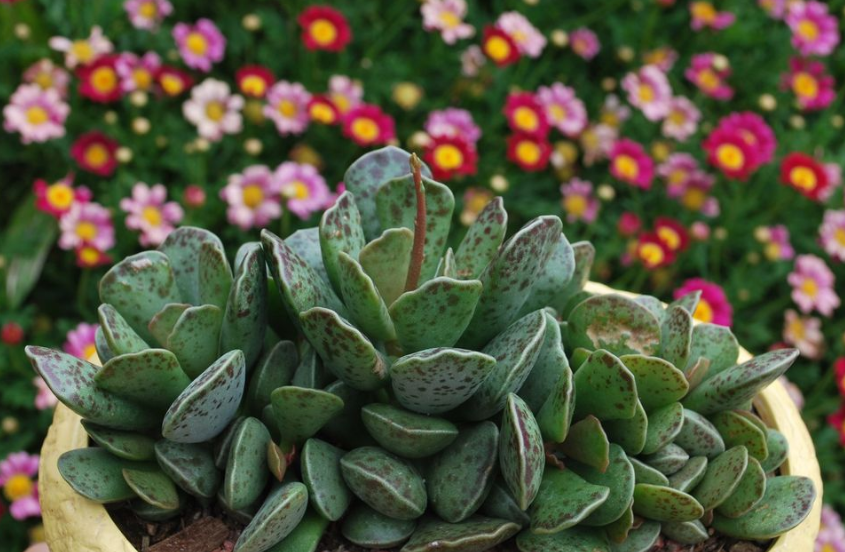
This mesmerizing specimen is covered in purple and gray dots, similar to the eggs of the Plover bird, therefore the origin of the name is easy to understand. Namely, the freckles on the surface of this plant become more prominent if you expose the Plover Eggs to direct sunlight. An important thing to mention when we talk about this species is that it needs to be kept in a worm environment, not colder than 60 degrees Fahrenheit. Otherwise, you will have to look for another specimen of Adromischus cooperi. If you want to spread the love and help your plan multiply, just take one leaf of your plant with a gentle pull out move and let it rest in a preprepared soil mix where it will let the roots in about a month and a half.
If you are having trouble finding the exact Succulent from your imagination since your local flower shop is not that well supplied, or they simply do not sell what you need, try searching for your favorite plants online on websites such as succulentmarket.com, since they have been taking care of both Succulent and Cactus plants for more than a half of century, and are happy to share their plants with you as well as their experience.
2. Pebbled Tiger Jaws
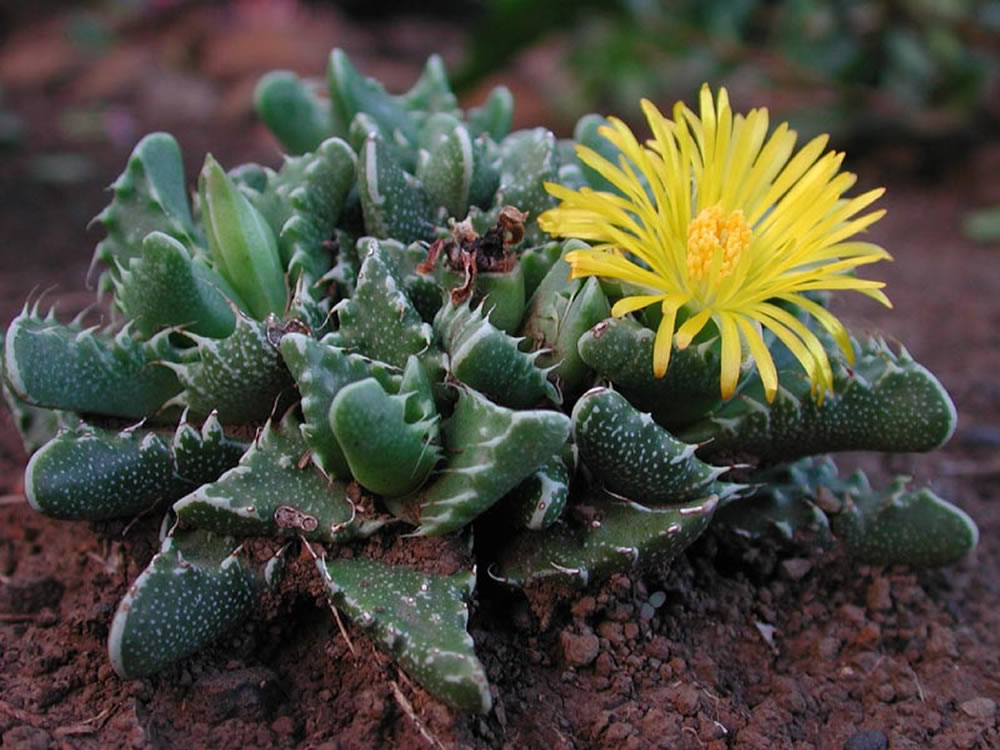
The characteristic feature of this Succulent plant is that it has intriguing saw-like leaves that resemble the jaws of a tiger. Not only are they cherished for their unusual looks, but they also enchant with their sun-like flowers that appear in colder periods, thus, winter and fall are the seasons when Faucaria felina blossoms. You would have to dedicate more of your time than you would have to with other Succulents since this species needs more watering than its kin. On the other hand, if you notice that your plant is drying out, take the opportunity and propagate it. The ideal timing for multiplying is when the leaves detach themselves from the trunk.
3. Baseball Plant
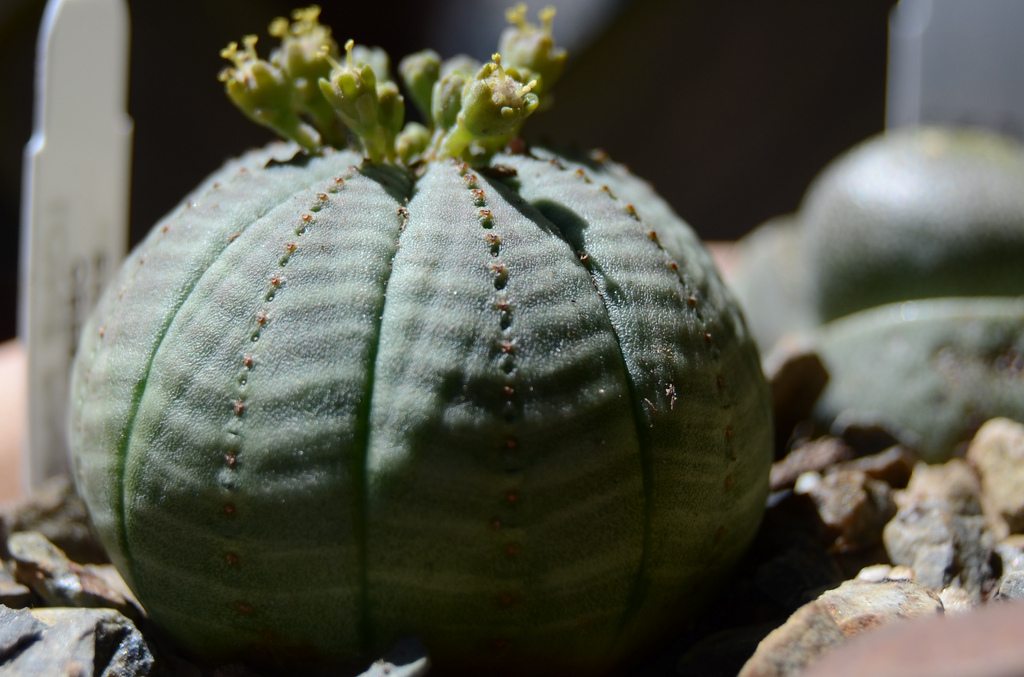
Whether you are a baseball lover or not, this plant will make a wonderful central figure in your herb setting. It is easy to maintain since all you have to do to keep it fit is to water it lightly once a week. This round fellow will show you he is doing fine by greeting you with small blossoms waving from the top of its body.
4. Aloe Hawthoroides
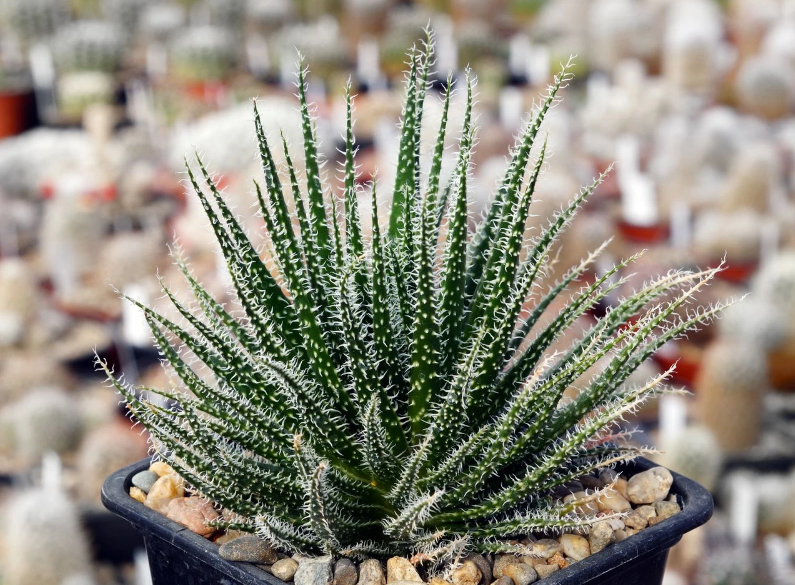
Remember the standard aloe? Well, we have an upgrade! This plant has multiple thornlike branches that will not hurt you even if you cannot resist touching it. On the other hand, its ruff exterior speaks about its enviable endurance, therefore, keeping this specimen well-nourished and alive should not be challenging, as long as you remember to water it from time to time and do not forget to bring it in when the cold weather sets in.
5. Echeveria Elegans
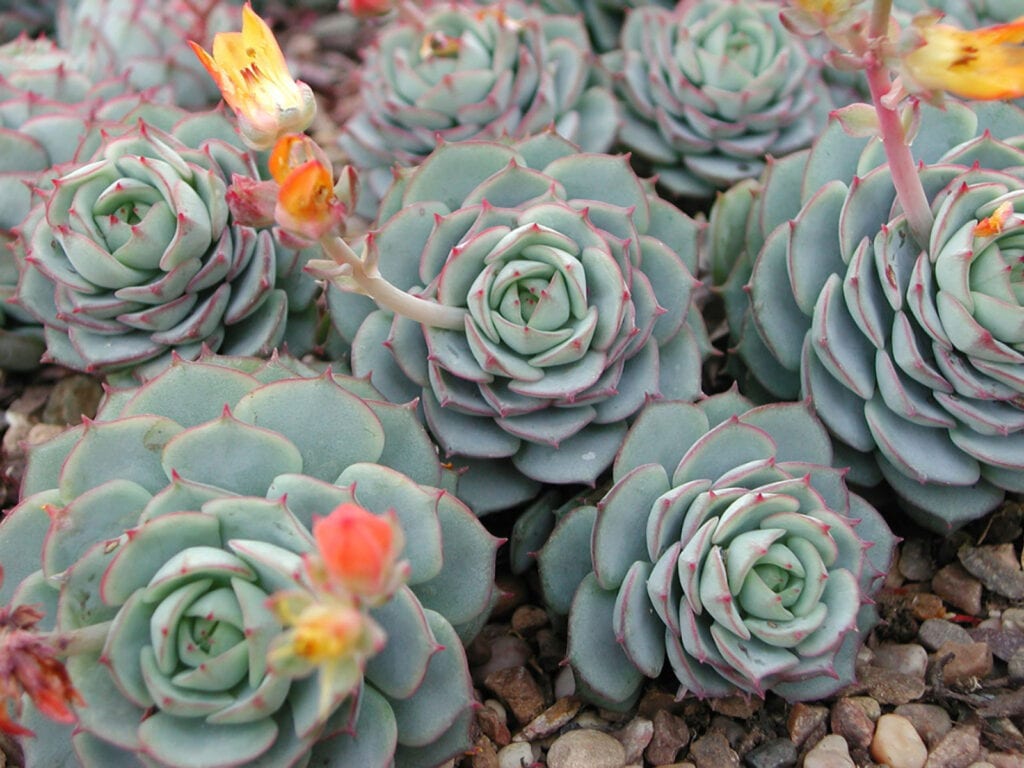
This wonderful plant is a type of Echeveria family and what makes it stand out from the crowd is the formation of unique rosettes in blue and green. This will be possible once your plant feels fine in the setting you have prepared and starts multiplying while ornamenting everything around it. Echeveria elegans enjoys a warmer climate, so if you decide to keep it in your garden over the summer, the wise decision would be to take it inside when weather conditions start to deteriorate. Once you get your hands on this type of Succulent plants, your collection will never look the same again.
Since you have met some of the representatives of the Succulent plants, the time has come for you to plan and design the looks of your new garden, whether it will be placed in your backyard or you prefer to keep your plants in home conditions. Whatever your choice might be, the Succulents will surely contribute to both the unique looks and variety of your collection. Carefully pick what you find interesting among the aforementioned suggestions and enjoy the benefits these wonderful plant creatures shall bestow upon you.




